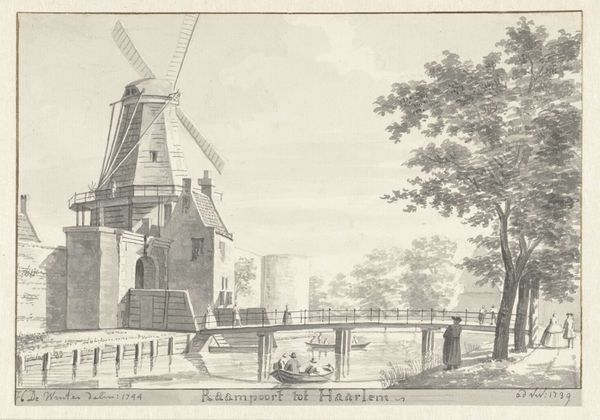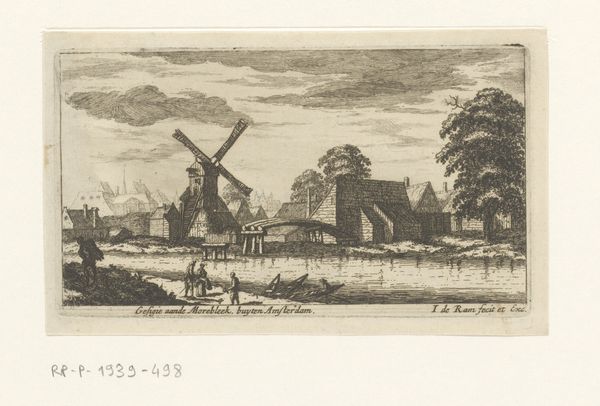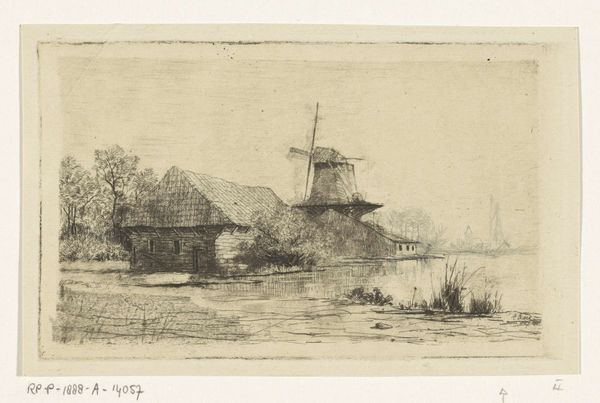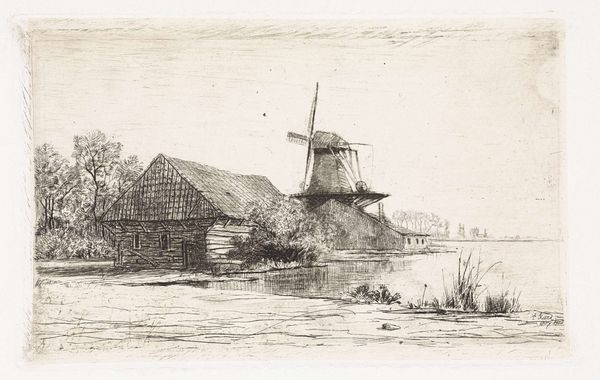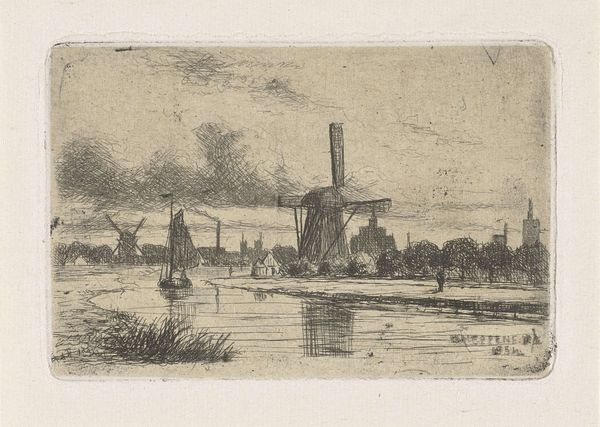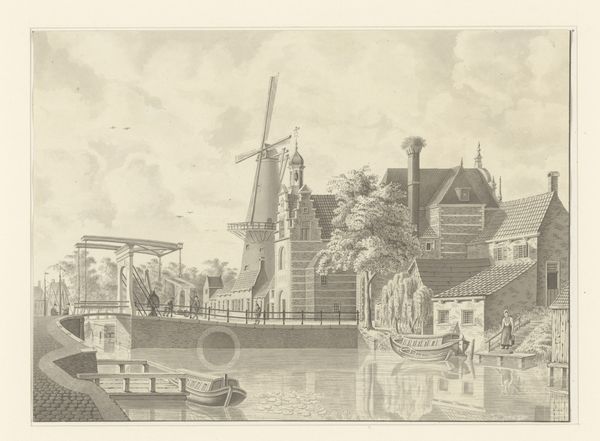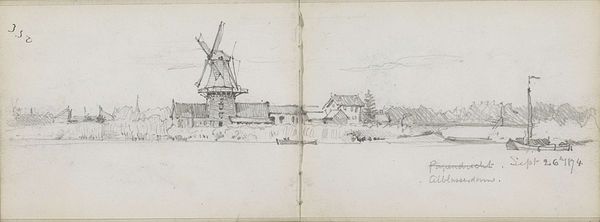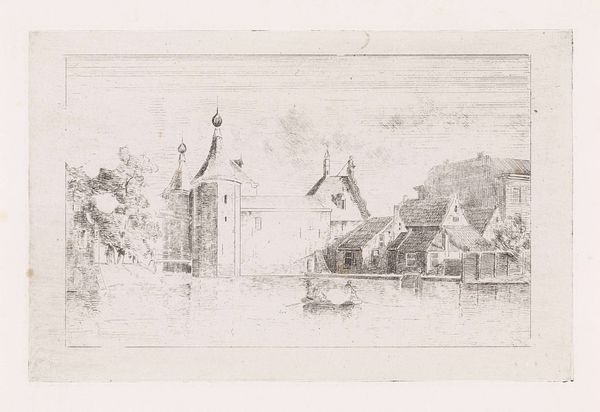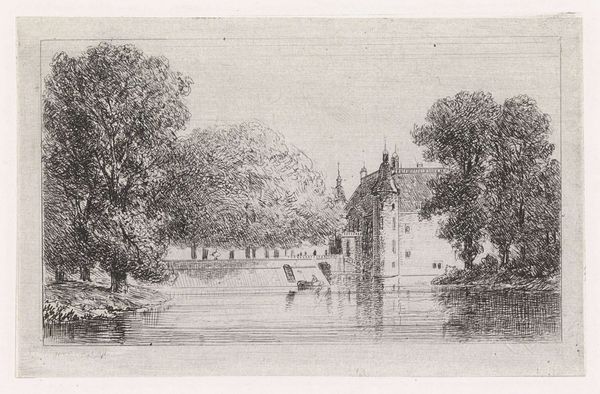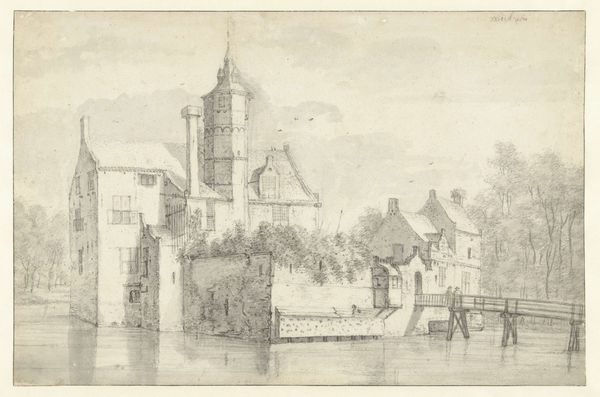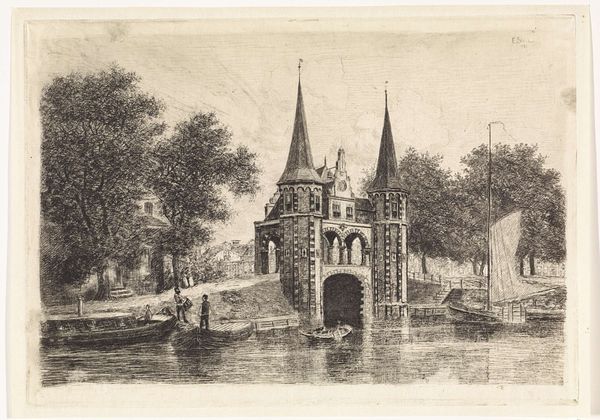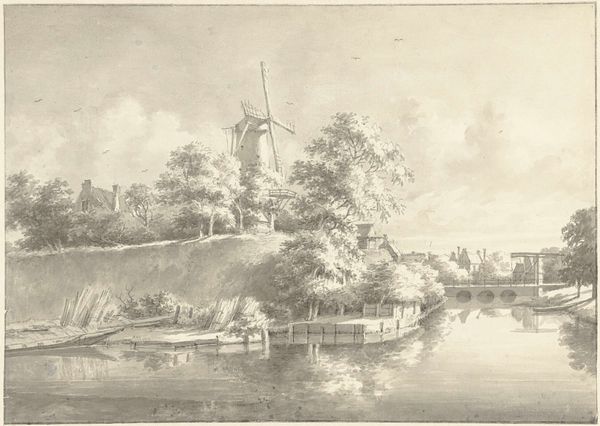
drawing, pencil
#
pencil drawn
#
drawing
#
pencil sketch
#
landscape
#
pencil drawing
#
pencil
#
cityscape
#
pencil work
#
genre-painting
Dimensions: height 125 mm, width 196 mm
Copyright: Rijks Museum: Open Domain
Curator: Looking at Verspuy's pencil drawing, “Kleiwegpoort te Gouda,” likely completed between 1833 and 1862 and currently held in the Rijksmuseum, I immediately notice its melancholic stillness. The muted tones evoke a sense of quiet introspection. Editor: Yes, there’s an immediate quality of industry subdued; you sense the presence of human activity through the windmill and architecture, yet it’s utterly depopulated, hushed. What I appreciate is the artist's commitment to detail in rendering the textures of the stone and water using only pencil. Curator: Exactly! Consider the socio-political context. Was Verspuy perhaps subtly critiquing the social disruptions caused by industrialization through the deliberate depopulation and rendering of architectural relics of a bygone era? The Kleiwegpoort itself would have represented a boundary, both physical and symbolic, dictating access to and from the city of Gouda, reinforcing power dynamics and controlling the flow of both people and resources. Editor: And yet it is made accessible, both formally through the bridge construction in the foreground and iconographically through the accessibility that drawings have. There is the immediate function of boundary construction of this physical location. Drawings, affordable to many and transportable, allowed for greater distribution to social classes to see and understand these forms of power. We must account for paper production, too—how were those materials made? Who produced those materials and for whom? Curator: A pertinent question. Was the creation and viewing of such artworks a privilege reserved for the upper echelons of society? Whose narratives were prioritized through this visual representation of place and space? We also need to reflect on whose histories may have been omitted or misrepresented in this carefully composed view. Editor: Precisely. And the artist’s labor – his precise pencil strokes, the time invested in observation and translation onto paper; it's a skilled practice deeply embedded in social hierarchies of production, particularly as the division of labor stratified throughout the long 19th century. Curator: The muted color palette, or lack thereof, emphasizes the subject in its structure and utility. Examining the history of Gouda at this time, and Verspuy's connection to its cultural climate, allows us to delve deeper into the possible motivations behind this particular subject. Editor: Yes. When observing art, considering both the object itself and the broader circumstances of production— the human labor, raw materials, and means of dissemination– can provide essential insights beyond formal analysis. I believe a close look reveals much about the values and inequalities within Verspuy’s time. Curator: Ultimately, it’s about broadening the conversation surrounding a work like this, moving beyond simple appreciation to engage with more complex, sometimes uncomfortable truths about the society that produced it. Editor: Agreed. Seeing both art and society this way can lead to critical reevaluations that can create positive transformation in ourselves.
Comments
No comments
Be the first to comment and join the conversation on the ultimate creative platform.

